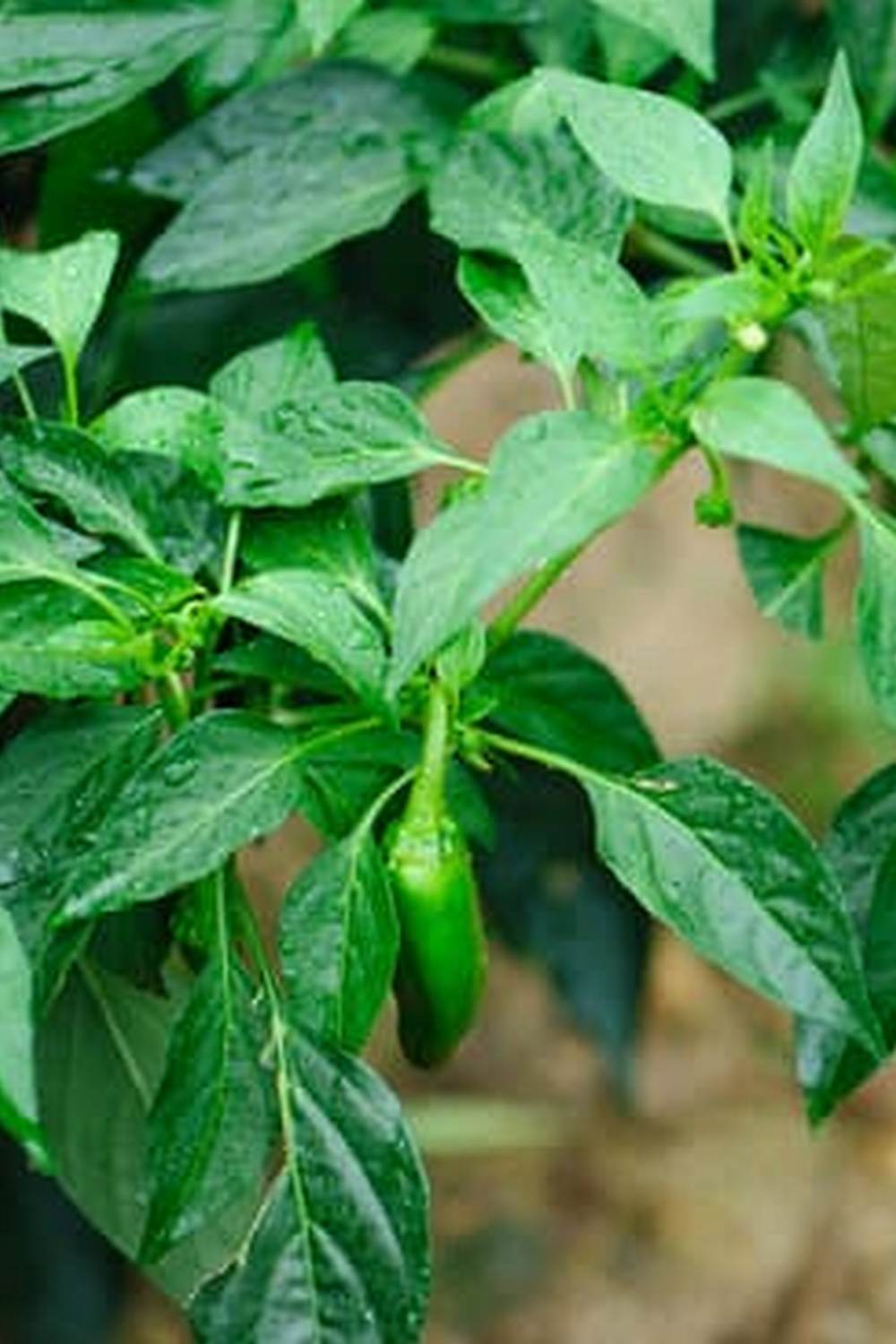Are you looking to maximize the growth and health of your vegetable garden? If so, you’ve come to the right place. In this article, we’ll explore the concept of companion planting in vegetable gardens and provide a comprehensive list of companion plants for various vegetables. Companion planting involves strategically planting different species of plants together to provide mutual benefits such as pest control, pollination, and improved growth.
Companion planting offers several advantages for vegetable gardens. By understanding which plants work well together, you can create a thriving ecosystem that supports the health and productivity of your crops. This method also promotes biodiversity in the garden, reducing the risk of crop failure due to pests or diseases. Additionally, companion planting can help improve soil quality and nutrient uptake for vegetables, leading to healthier and more robust plants.
Throughout this article, we will delve into the science behind plant compatibility and provide practical tips on planning and implementing companion planting in your vegetable garden. Whether you’re growing tomatoes, cucumbers, zucchinis, or other vegetables, understanding which companion plants to include in your garden can make a significant difference in the overall success of your harvest. So let’s dive in and discover the world of companion planting for vegetable gardens.
Understanding the Concept of Compatible Companion Plants
Compatible companion plants are those that can be grown in close proximity to each other without negatively affecting one another. This concept is based on the idea that certain plants have natural characteristics or compounds that can benefit neighboring plants by repelling pests, attracting beneficial insects, improving soil health, or enhancing flavor and growth. Understanding which plants are compatible companions for each other is essential for successful vegetable gardening.
The science behind compatible companion plants lies in the interactions between different plant species. For example, some plants release chemicals into the soil that inhibit the growth of certain pests or diseases, which can protect neighboring plants from harm. Other plants may attract pollinators or predatory insects that help control pests in a garden. By understanding these complex interactions, gardeners can strategically plan their plantings to maximize the benefits of companion planting.
| Vegetable Plant | Companion Plants |
|---|---|
| Tomato | Carrots, Basil, Chives |
| Cucumber | Corn, Sunflowers, Nasturtiums |
| Zucchini | Peas, Beans, Dill |
List of Beneficial Companion Plants for Tomato Plants
When it comes to companion planting for tomato plants, there are several beneficial plants that can help improve the growth and health of your tomatoes. Here is a list of companion plants that are known to deter pests and diseases for tomato plants:
- Basil: Planting basil alongside tomatoes can help repel pests such as aphids, mites, and hornworms. It also enhances the flavor of tomatoes when used in cooking.
- Marigolds: These vibrant flowers not only add beauty to the garden but also act as a natural insect repellent, deterring nematodes and other harmful pests from attacking tomato plants.
- Nasturtiums: Nasturtiums provide excellent ground cover and attract aphids away from tomato plants. They also serve as a sacrificial plant by luring pests away from tomatoes.
Companion planting with these beneficial plants can also improve soil health and biodiversity in your vegetable garden, leading to better overall plant growth.
Incorporating these companion plants around your tomato patch not only helps in pest control but can also contribute to an aesthetically pleasing and biodiversity-rich garden. By understanding which plants are compatible with tomatoes, you can create a thriving ecosystem that benefits all the vegetables in your garden.
Overall, integrating these companion plants into your vegetable garden design can lead to healthier and more productive tomato plants while reducing the need for chemical pesticides or insecticides.
Companion Plants for Cucumber and Zucchini Plants
When it comes to growing cucumbers and zucchinis in your vegetable garden, companion planting can be a great way to enhance the growth and flavor of these plants. By choosing the right companion plants, you can also help improve soil quality and deter pests and diseases.
One of the most well-known companion plants for cucumbers and zucchinis is the marigold. Marigolds are excellent at repelling pests such as nematodes, which can be harmful to cucumber and zucchini plants. Additionally, they add a pop of color to your garden while helping to keep it healthy.
Another beneficial companion plant for cucumbers and zucchinis is dill. Dill attracts beneficial insects such as ladybugs and parasitic wasps, which can help control pests that may harm your vegetable plants. Plus, dill’s feathery leaves provide a lovely texture contrast in the garden.
In addition to marigolds and dill, other compatible companion plants for cucumbers and zucchinis include nasturtiums, beans, peas, and radishes. These plants can help deter pests, attract pollinators, and even improve soil health when grown alongside cucumber and zucchini plants. By incorporating these companion plants into your vegetable garden design, you can create a thriving ecosystem that supports the growth of your crops.
Flowers and Herbs as Companions for Vegetable Plants
When it comes to creating a thriving vegetable garden, incorporating flowers and herbs as companion plants can have numerous benefits. Not only do they add aesthetic appeal to the garden, but they also serve important ecological functions. By attracting beneficial insects, repelling pests, improving soil health, and enhancing the flavor of vegetables, flowers and herbs play a vital role in creating a balanced and sustainable garden ecosystem.
Here is a list of flowers that are beneficial for vegetable gardens:
- Marigolds: Known for their ability to repel nematodes and other harmful soil-dwelling pests.
- Nasturtiums: These vibrant flowers not only add beauty to the garden but also repel aphids, whiteflies, and squash bugs.
- Calendula: Also known as pot marigold, this flower attracts pollinators like bees and butterflies while deterring tomato hornworms.
In addition to flowers, incorporating herbs into your vegetable garden can promote overall plant health and productivity. Here is a list of herbs that make excellent companions for vegetables:
- Basil: Planted near tomatoes, basil can improve their flavor and help repel pests such as mosquitoes and flies.
- Dill: Its strong aroma can attract predatory insects that feed on common vegetable pests like aphids and caterpillars.
- Parsley: When planted near asparagus or tomatoes, parsley can enhance their growth and flavor while attracting beneficial insects.
By carefully selecting specific flowers and herbs to complement your vegetable plants, you can create a diverse and harmonious garden ecosystem that promotes overall plant health and maximizes yields. These intercropping strategies not only benefit your plants but also contribute to a more vibrant and beautiful garden space.
Companion Plants for Pest Control in Vegetable Gardens
Companion planting is a popular gardening technique that involves planting different species of plants in close proximity to one another to enhance growth, repel pests, and improve flavor. When it comes to pest control in vegetable gardens, companion planting can play a crucial role in naturally deterring common pests while minimizing the need for chemical pesticides.
Identifying Pest-Repelling Plants
Certain plants are known for their ability to repel pests due to their natural compounds and aromas. For example, marigolds are effective at repelling nematodes, aphids, and other harmful insects that commonly affect vegetable crops. Additionally, aromatic herbs such as basil, mint, and rosemary can also help deter pests like mosquitoes and flies from invading the garden.
The Importance of Natural Pest Control
Embracing natural pest control methods through companion planting not only helps protect the environment by reducing reliance on synthetic pesticides but also promotes a healthy ecosystem within the garden. By attracting beneficial insects like ladybugs and predatory wasps through the use of companion plants, gardeners can create a balanced ecosystem that naturally controls pest populations without harmful chemicals.
Integrating Pest-Repelling Plants Into Vegetable Gardens
When planning a vegetable garden design with pest control in mind, it’s important to strategically integrate pest-repelling plants throughout the space. Consider planting rows of marigolds along the borders of the garden or interplanting them between vegetable crops to create a protective barrier against common pests.
Additionally, incorporating aromatic herbs around the perimeter or throughout the garden beds can further enhance pest control efforts. By thoughtfully selecting companion plants for their pest-repelling qualities, gardeners can harness the power of natural pest control while reaping the benefits of a thriving vegetable garden.
Interplanting Techniques for Maximum Garden Success
Understanding Interplanting
Interplanting is a gardening technique that involves planting different types of crops in close proximity to one another for mutual benefit. This can help maximize space, increase crop yield, and improve soil health. When it comes to companion planting in vegetable gardens, interplanting allows for the strategic placement of plants that can provide natural pest control, enhance soil fertility, and promote overall garden health.
Complementary Plant Pairings
When implementing interplanting techniques in your vegetable garden, it’s important to consider which plants work well together. For example, planting aromatic herbs such as basil and rosemary near tomato plants can help repel pests while also enhancing the flavor of the tomatoes. Additionally, intercropping nitrogen-fixing legumes like peas or beans with heavy feeders like corn or squash can help improve overall soil fertility.
Succession Planting
Another interplanting technique to consider is succession planting, where different crops are planted in the same space at different times throughout the growing season. This method allows for continuous harvests and maximizes the use of garden space. For example, cool-season crops like lettuce and spinach can be interplanted with warm-season crops like peppers and tomatoes to ensure a steady supply of fresh produce throughout the year.
List of Companion Plants for Vegetable Gardens
through interplanting not only benefits the individual crops but also contributes to the sustainability of your garden as a whole.
Planning and Implementing Companion Planting in Your Vegetable Garden
In conclusion, companion planting in vegetable gardens can be a highly beneficial and effective practice for promoting plant health and productivity. By carefully selecting compatible companion plants, gardeners can create a harmonious ecosystem that helps deter pests, attract beneficial insects, and improve overall crop yield. Additionally, interplanting techniques can maximize space and resources, making the most out of the available gardening area.
When planning and implementing companion planting in your vegetable garden, it is important to consider the specific needs and characteristics of each plant. Researching and creating a list of companion plants for vegetable gardens can help guide you in choosing the most suitable pairings for your crops. By understanding the concept of plant compatibility and the science behind companion planting, gardeners can make informed decisions when selecting which plants to interplant.
Successful implementation of companion planting also involves careful planning and consideration of the layout and design of the garden. By following a step-by-step guide for incorporating companion plants into a vegetable garden design, gardeners can ensure that each plant has ample space to thrive while also reaping the benefits of intermingling with compatible companions.
With proper planning and thoughtful consideration, companion planting can be a valuable tool for any vegetable gardener looking to promote a healthy and bountiful harvest.
Frequently Asked Questions
What Plants Grow Best Together in a Vegetable Garden?
Certain plants grow best together in a vegetable garden because they can benefit each other in terms of pest control, pollination, and nutrient uptake. For example, planting tomatoes with basil can help repel pests and improve the flavor of the tomatoes.
What Not to Plant Together in a Veggie Garden?
There are certain combinations of vegetables that should be avoided when planting together in a veggie garden. For instance, planting potatoes and tomatoes together can increase the risk of spreading diseases like blight. It’s important to research which plants may have negative effects on each other.
What 3 Vegetables Grow Well Together?
Three vegetables that grow well together in a garden are known as the “three sisters”: corn, beans, and squash.
This traditional Native American planting technique allows these three crops to support each other – corn provides a structure for beans to climb, beans add nitrogen to the soil for all three plants, and squash acts as a living mulch by shading the soil and preventing weed growth.

If you’re looking to get into vegetable gardening, or are just looking for some tips on how to make your current garden better, then you’ve come to the right place! My name is Ethel and I have been gardening for years. In this blog, I’m going to share with you some of my best tips on how to create a successful vegetable garden.





